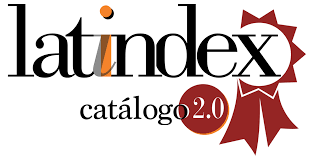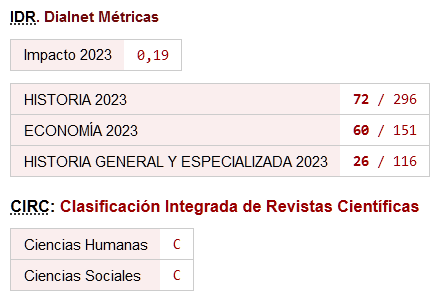Envíos
Lista de comprobación para la preparación de envíos
Como parte del proceso de envío, los autores/as están obligados a comprobar que su envío cumpla todos los elementos que se muestran a continuación. Se devolverán a los autores/as aquellos envíos que no cumplan estas directrices.- El envío no ha sido publicado previamente ni se ha sometido a consideración por ninguna otra revista (o se ha proporcionado una explicación al respecto en los Comentarios al editor/a).
- El archivo de envío está en formato OpenOffice, Microsoft Word, RTF o WordPerfect.
- Siempre que sea posible, se proporcionan direcciones URL para las referencias.
- El texto tiene interlineado sencillo; 12 puntos de tamaño de fuente; se utiliza cursiva en lugar de subrayado (excepto en las direcciones URL); y todas las ilustraciones, figuras y tablas se encuentran colocadas en los lugares del texto apropiados, en vez de al final.
- El texto se adhiere a los requisitos estilísticos y bibliográficos resumidos en las Directrices del autor/a, que aparecen en Acerca de la revista.
Artículos Doctrinales / Doctrinal Articles
Trabajos originales
Noticias de Archivos / News from Archives
Crónicas
Tesis Doctorales / Doctoral Theses
Tesis doctorales
Comentarios Bibliográficos / Bibliographic Comments
Comentario bibliográfico
Obituario / Obituary
Obituario
Noticias / News
Noticias relacionadas con la Historia de la Contabilidad
Aviso de derechos de autor/a
Los artículos publicados en De Computis podrán ser utilizados para propósitos educativos y científicos, siempre y cuando se realice la correcta citación de estos.
Los autores/as conservarán sus derechos de autor y garantizarán a la revista el derecho de primera publicación de su obra, el cual estará simultáneamente sujeto a la Licencia de Creative Commons (CC BY-NC-SA 4.0): https://creativecommons.org/licenses/by-nc-sa/4.0/
Declaración de privacidad
El responsable del tratamiento de los datos de carácter personal aportados para las revistas a las que da acceso Revistas UPO es la revista De Computis, Revista Española de Historia de la Contabilidad. Para consultar la información adicional y detallada sobre protección de datos puede ponerse en contacto con la revista De Computis, Revista Española de Historia de la Contabilidad dirigiéndose a la dirección indicada en “acerca de/contacto”.
Asimismo, se le informa que la Universidad Pablo de Olavide actúa como Encargado de Tratamiento de cada uno de los ficheros cuya titularidad es de las diferentes revistas. Por tanto, la Universidad Pablo de Olavide, facilita el ejercicio de sus derechos de acceso, de rectificación, de supresión, a la limitación del tratamiento, a la portabilidad de los datos, de oposición y a no ser objeto de decisiones individuales automatizadas, incluida la elaboración de perfiles dirigiéndose a la sede de la Universidad Pablo de Olavide, sita en Ctra. de Utrera, km. 1 41013, Sevilla (ES), o bien solicitándolo por email a la dirección deleg.protecciondedatos@upo.es, acompañando acreditación de su identidad.










